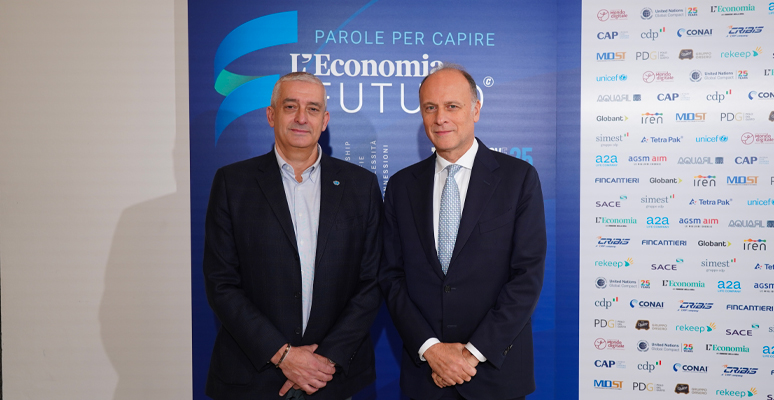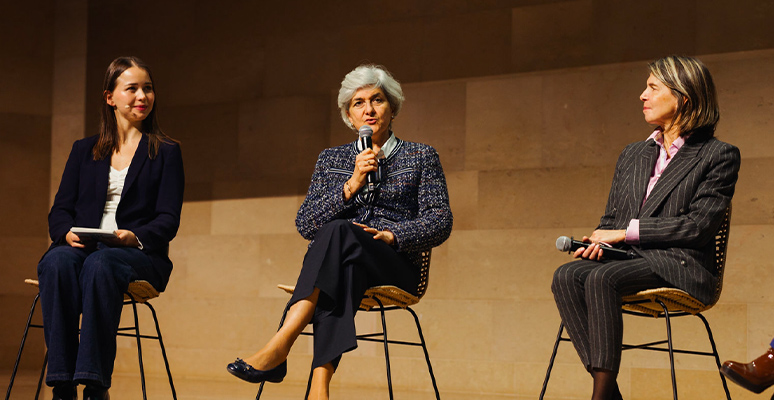
- Start date
- Duration
- Format
- Language
- 10 mar 2026
- 40 hours
- Online
- Italian
Il corso intende fornire tutte le competenze necessarie a padroneggiare e applicare i principali strumenti e framework esistenti in materia di sustainability reporting.
Blue is the new green. While the idea that the environment provides services generating ecological, social, and economic benefits—and therefore must be preserved through sustainable use—has long become common ground, practical application has so far focused mainly on terrestrial ecosystems.
The Blue Economy Monitor, which made its public debut yesterday with the presentation of two studies, stems from the collaboration between Intesa Sanpaolo and SDA Bocconi’s Sustainability Lab to explore the blue economy, “a concept that expands on the traditional notion of the marine economy by integrating the principles of environmental and social sustainability,” said Stefano Caselli, Dean of SDA Bocconi School of Management. “It focuses on the responsible use of ocean resources to foster economic growth, improve livelihoods, and create jobs, while ensuring the health of marine ecosystems.”
“Among the emerging trends, the blue economy and seabeds offer extraordinary growth potential for our country. Supporting research in this field means enhancing competitiveness and Italian distinctiveness, while building virtuous ecosystems where institutions, businesses and universities work together to prepare future generations for global challenges and constant transformation,” said Elisa Zambito Marsala, Head of Education Ecosystem and Global Value Programs at Intesa Sanpaolo.
Institutional support for the initiative came from the participation of Delilah Al Kundhairy, Director for Maritime Policy and Blue Economy at the European Commission’s DG MARE; Andrea Catizone, Advisor to the Minister of Universities and Research; and Ambassador Sergio Piazzi, Secretary General of the Parliamentary Assembly of the Mediterranean.
Francesco Perrini, Scientific Director of the Blue Economy Monitor, presented the results of two studies—on blue natural capital and sustainable mobility in the maritime and port sectors—conducted with Oliviero Baccelli, Manlio De Silvio, Clelia Iacomino, and Stefano Pogutz.
Blue Natural Capital—the set of marine and coastal natural resources that generate ecological, social, and economic benefits—represents a strategic asset for both the planet and Italy. Globally, the value of Blue Natural Capital stock is estimated at over 24 trillion dollars, including 5.6 trillion in the Mediterranean. These ecosystems generate annual economic flows between 1.5 and 2.6 trillion dollars, with projected growth reaching 3 trillion by 2030. In Italy, the marine economy employs more than one million people. The country ranks among the top five EU member states in terms of contribution to the marine economy, with a leading position in coastal tourism, shipbuilding, maritime transport, and fishing and aquaculture.
The second study from the Observatory examines the role of maritime transport—a crucial sector for both the Italian and global economies—currently undergoing a profound transformation toward decarbonization. The industry, which represents the most energy-efficient mode of transport, accounts for about 2.9% of global greenhouse gas emissions, with projections indicating a potential increase of up to 130% by 2050 in the absence of corrective measures.
The themes explored in the studies were discussed by a panel including Francesco Billari, Rector of Bocconi University; Matteo Boaglio, Head of Institutional Special Projects and Policies, Intesa Sanpaolo; Silvia Botto, Head of IMI CIB Strategies & Marketing, Intesa Sanpaolo; Claudio Cisilino, Executive Vice President of Operations, Corporate Strategy and Innovation, Fincantieri S.p.A.; Massimo Deandreis, General Director, SRM Centro Studi; Michel Hochmann, President of EPHE, Blue Economy Observatory, Université PSL; Jan Pachner, Secretary General, One Ocean Foundation; Paola Papanicolaou, Head of International Banks Division, Intesa Sanpaolo; and Mario Zanetti, CEO of Costa Cruises and President of Confitarma.
For Intesa Sanpaolo, the Blue Economy Monitor is part of a broader ecosystem dedicated to the Blue Economy and Seabed Resources, involving prominent national and international partners such as Université PSL in Paris, SRM Centro Studi e Ricerche, One Ocean Foundation, and major corporate players.
SDA Bocconi School of Management

Il corso intende fornire tutte le competenze necessarie a padroneggiare e applicare i principali strumenti e framework esistenti in materia di sustainability reporting.

Acquisire competenze su normative, compliance e responsabilità aziendali per prevenire contenziosi e gestire le implicazioni legali dei fattori ESG in impresa.

Il programma ha l’obiettivo di supportare le imprese in una transizione che porti ad allineare gli obiettivi professionali con quelli della società civile

